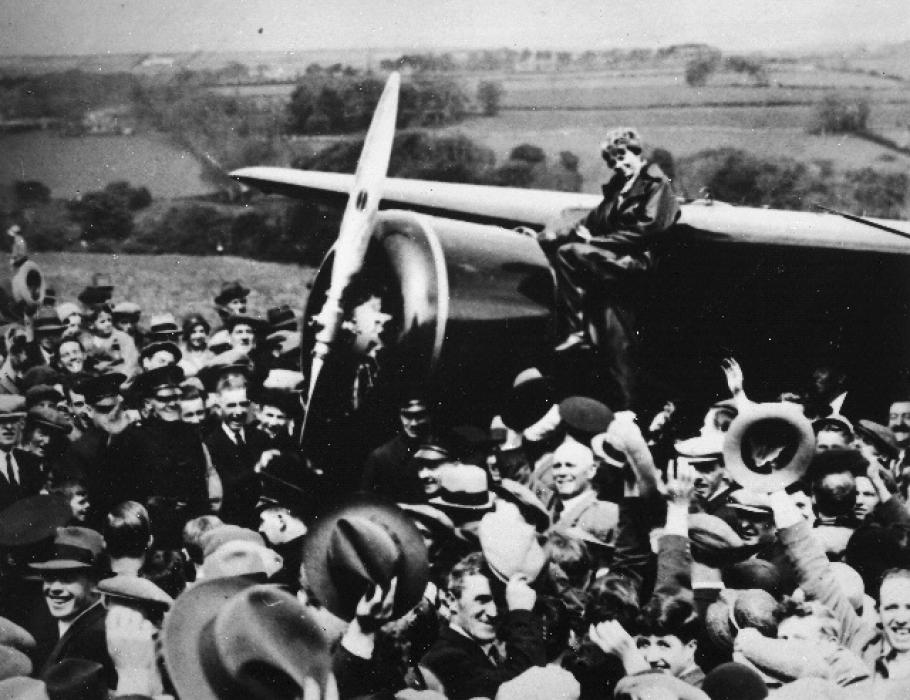Introduced in 1927, the Vega was the first product of designer Jack Northrop and Allan Loughead's Lockheed Aircraft Company. Sturdy, roomy, streamlined, and fast, the innovative Lockheed Vega became favored by pilots seeking to set speed and distance records.
Keep an eye out for these four interesting things inside the cockpit of the Vega:
- Earhart used the control stick (center, below the instrument panel) and the rudder pedals (left and right, below the instrument panel) to fly the aircraft, enabling her to control pitch, roll, and yaw, respectively.
- Earhart used the climb indicator (left bottom row) and altimeter (far right bottom) to manage her altitude and the turn, and bank indicator (lower center) to maintain straight and level flight.
- There was no GPS in 1932, but Earhart did have the Sperry Directional Gyro, top left gauge; its spinning gyroscope was fixed on true north and south, so its direction indicator was more accurate than the Pioneer compass, top center, that could be affected by the Earth’s magnetic forces.
- The fuel gauges (far lower left of the instrument panel) displayed the status of eight fuel tanks, two in each wing and four in the cabin for a total of 420 gallons that gave Earhart a range of about 3,200 miles (a standard Vega had two fuel tanks).
Other fun facts about Amelia Earhart and her Lockheed Vega:
- Amelia Earhart was the first woman and only the second person, after Charles Lindbergh, to fly nonstop and solo across the Atlantic Ocean.
- Earhart landed in the Gallagher farm pasture in Culmore, near Derry, Northern Ireland; the landing site is now the 6th hole of the Foyle Golf Club.
- Ruth Nichols, Elinor Smith, and Laura Ingalls all hoped to beat Earhart across the Atlantic but each ran into difficulty.
- Earhart also used this Vega to make the first solo and nonstop U.S. transcontinental flight by a woman on August 24 and 25, 1932.
- Between 1929 and 1936 Earhart owned four Vegas and borrowed two.
- Record-setting pilots loved the beautiful and speedy Lockheed Vega, designed by John “Jack” Northrop and first flown in 1927, for its streamlined wooden monocoque (shell) fuselage, single cantilever (unsupported) wing and powerful engines.
See a new side to the National Air and Space Museum with images from our Air and Space Photo initiative. Explore the history of aviation and spaceflight from a new angle, and download high-resolution photographs of our collections.
